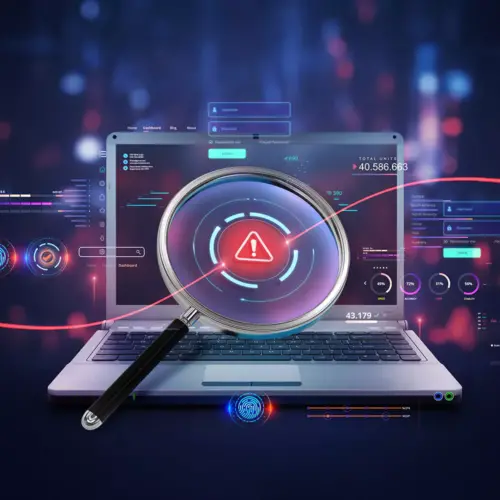Becoming best-in-class at incident management is an important goal of enterprises’ IT service management (ITSM) organizations. ITSM teams know that incidents can and do occur routinely during the course of normal business operations. As a result, teams rely on standardized processes to quickly research issues, develop mitigation strategies, and restore devices and applications to full availability. By using this approach, IT service management teams can reduce incident impacts, such as extended outages that harm workforce productivity, business and customer operations, and revenue-generating services.
IT incident management is an important part of the ITIL 4 framework, which is the most widely accepted IT service management approach in the world. ITIL 4 enables teams to use transformative technology and processes to improve operations and service quality. For example, IT service professionals increasingly leverage automation, Agile, DevOps, and lean processes speeding the time to incident diagnoses and resolution.
The ITIL 4 framework takes a customer-centric approach to service delivery, reflecting the reality that services have wide-spread impacts. As a result, practitioners are encouraged to consider four key dimensions as they plan, deliver, and improve service quality. These dimensions are:
- Organizations and people
- Value streams and processes
- Information and technology
- Partners and suppliers
“What are incidents? ITIL4 defines incidents as unplanned disturbances or effects on IT services that result in a reduction of service quality.”
IT Incident Management Has Historically Been a Reactive Process
Incidents can be reported by users but are increasingly detected and reported via automated alerts. Once alerted, the IT service desk is on the clock to diagnose the issue and restore affected devices and systems. As they work on these problems, IT team members are graded on such metrics as mean time to acknowledge (MTTA), mean time to resolution (MTTR), first-touch resolution rates, escalation rates, and more.
The work can be very stressful, as any IT service professional knows. In the absence of critical data, teams will strive to identify why the incident is occurring, where the issue is originating from, and how it’s affecting other applications. Some examples of incidents include:
- Configuration errors that cause device failures and cascade to involve other applications.
- A database server outage that impacts other applications that rely on it, either for daily operations or backups.
- A router or switch failure that creates a flood of alerts from all upstream devices and systems connected to that device.
The primary problem is that IT service management processes are inherently reactive, with teams spinning into high gear only when problems are detected. Yet, at the very time that teams need detailed insights they often struggle with limited visibility into why incidents are occuring. For example, incident management solutions provide little data on device utilization, dependencies, contracts, warranties, patches, updates, and other information—all information that is absolutely critical to diagnose root cause of the issues and resolve incidents swiftly.
As a result, team members may end up working on multiple issues simultaneously, only to realize that a single root cause is driving seemingly unrelated incidents. In these scenarios, incident management costs soar, while IT service desks are unable to meet their service-level agreements (SLAs) for incident resolution.
[Pull quote] Read our blog, The Impact of Change Management on Your IT Practice [End pull quote]
There’s a Better Way to Prepare for IT Incidents
While IT teams can’t completely prevent all negative incidents, they can proactively reduce them by creating key insights that enable faster issue diagnosis and resolution.
Deploying a configuration management database (CMDB) can provide significant benefits to teams tasked with resolving IT incidents. IT and service desk teams that use a next-generation CMDB like Device42 can auto-discover their entire IT asset base, including hardware, software, and virtualized technologies on premises or in the cloud. Device42 then automatically maintains and keeps the asset records up to date, while also removing devices or adding new devices as they are deployed and connected. Device42 also maps dependencies between devices and applications, enabling teams to explore these relationships and understand the impact of planned and unplanned changes.
Device42 further simplifies ITSM work by seamlessly integrating with software like JIRA, ZenDesk, and ServiceNow and abiding by key ITIL processes. As a result, IT service desks obtain a real-time, single version of truth about IT assets.
With integrated insights from Device42, IT service experts can proactively improve incident management by:
- Understanding all assets connected to the network, avoiding issues related to “shadow IT,” or unknown, unmanaged technology.
- Identifying devices that are having issues, their locations, and full range of dependencies in seconds, rather than minutes or hours.
- Understanding the downstream impacts of that device to prioritize issue resolution.
- Rapidly detecting and resolving the root cause of a device issue, to prevent or minimize cascading service failures or the possibility of issues reoccurring.
- Quickly notifying the right business units and resource owners about device issues, root causes, and mitigation strategies and timeframes.
Turbo-Charge IT Incident Management with Better Asset Visibility
As organizations become more digital, IT service desks need to maintain and improve IT equipment uptime and application performance.
While many tools on the market purport to be able to automatically find and diagnose root causes, there is currently no silver bullet for resolving these issues. As a result, teams use tribal knowledge, data, skill, and manual processes to diagnose root causes and make important fixes that prevent issue recurrences.
Device42 provides the agentless, automated discovery; dependency mapping; and holistic and granular data that enable IT service desks to continually improve incident management and root cause analysis. By doing so, these important teams can focus more on achieving strategic objectives and less on pesky alerts and incidents as they decrease over time.




